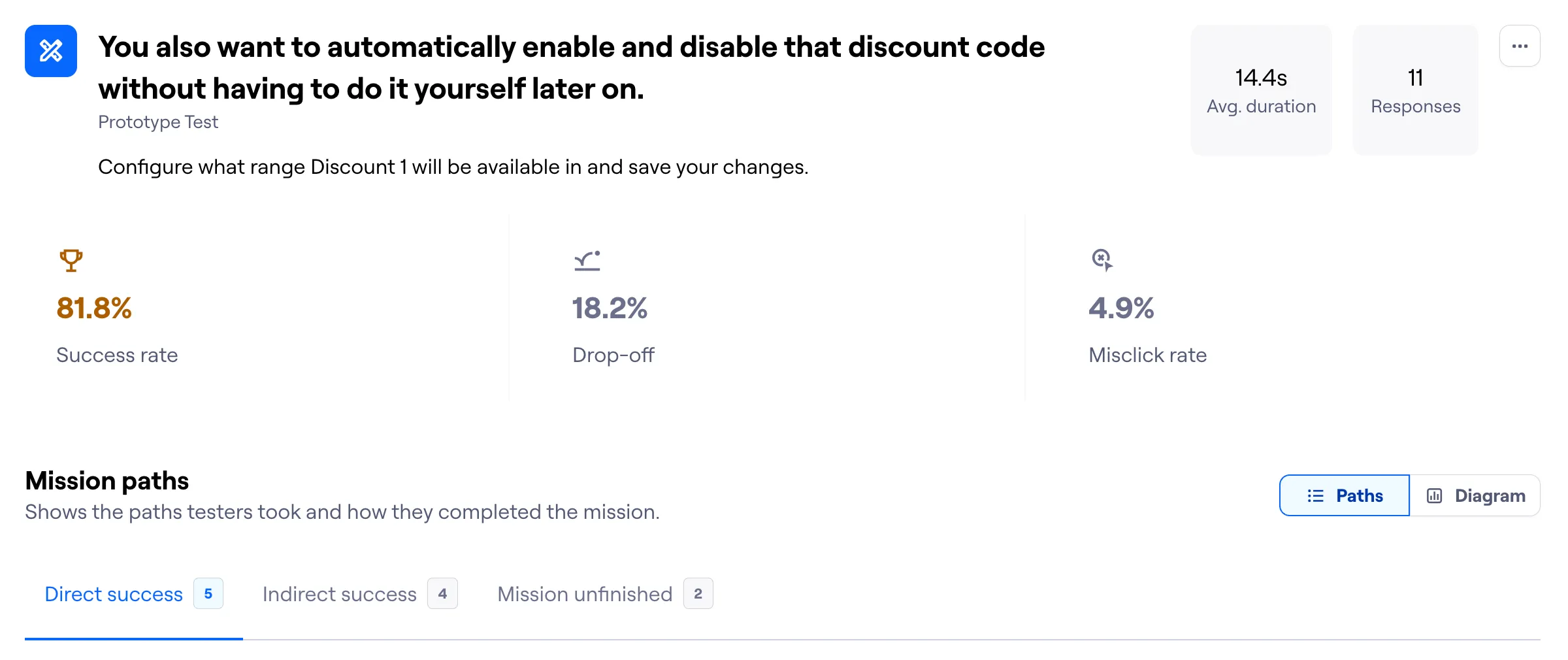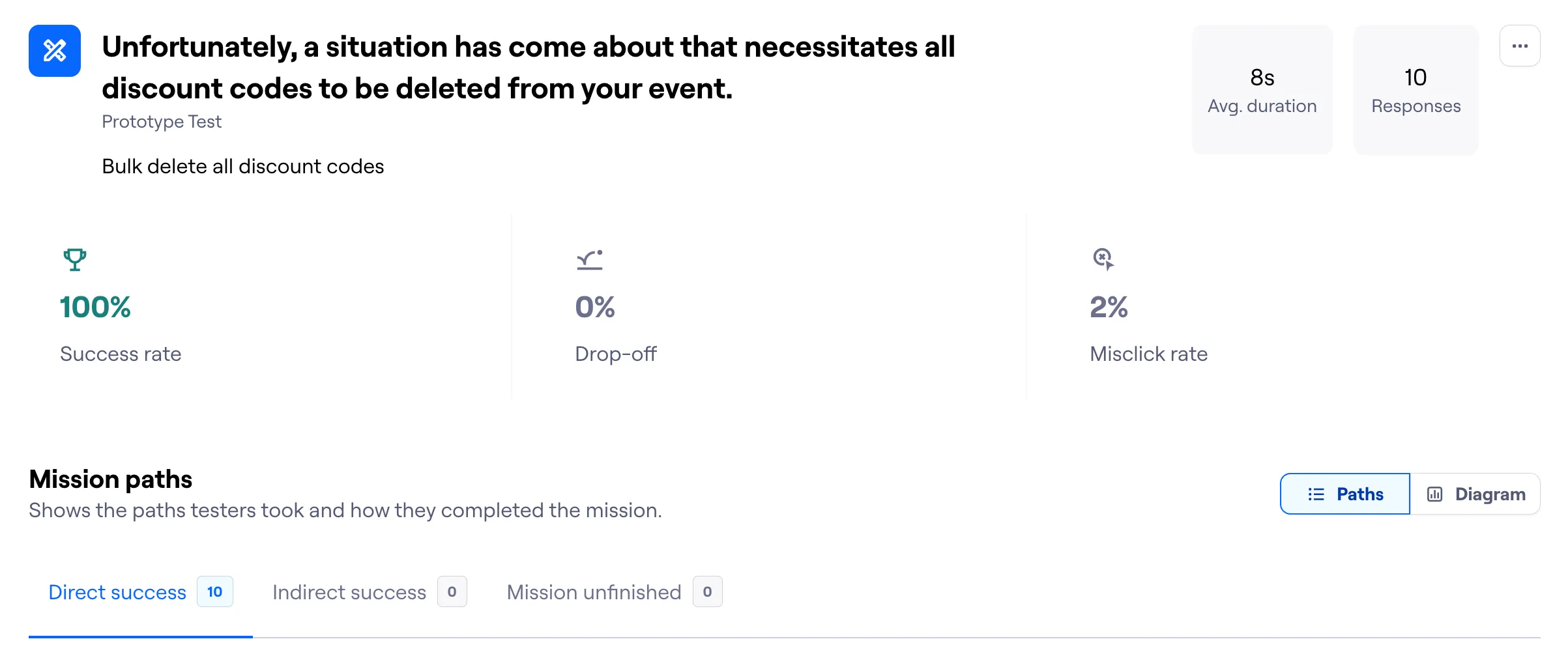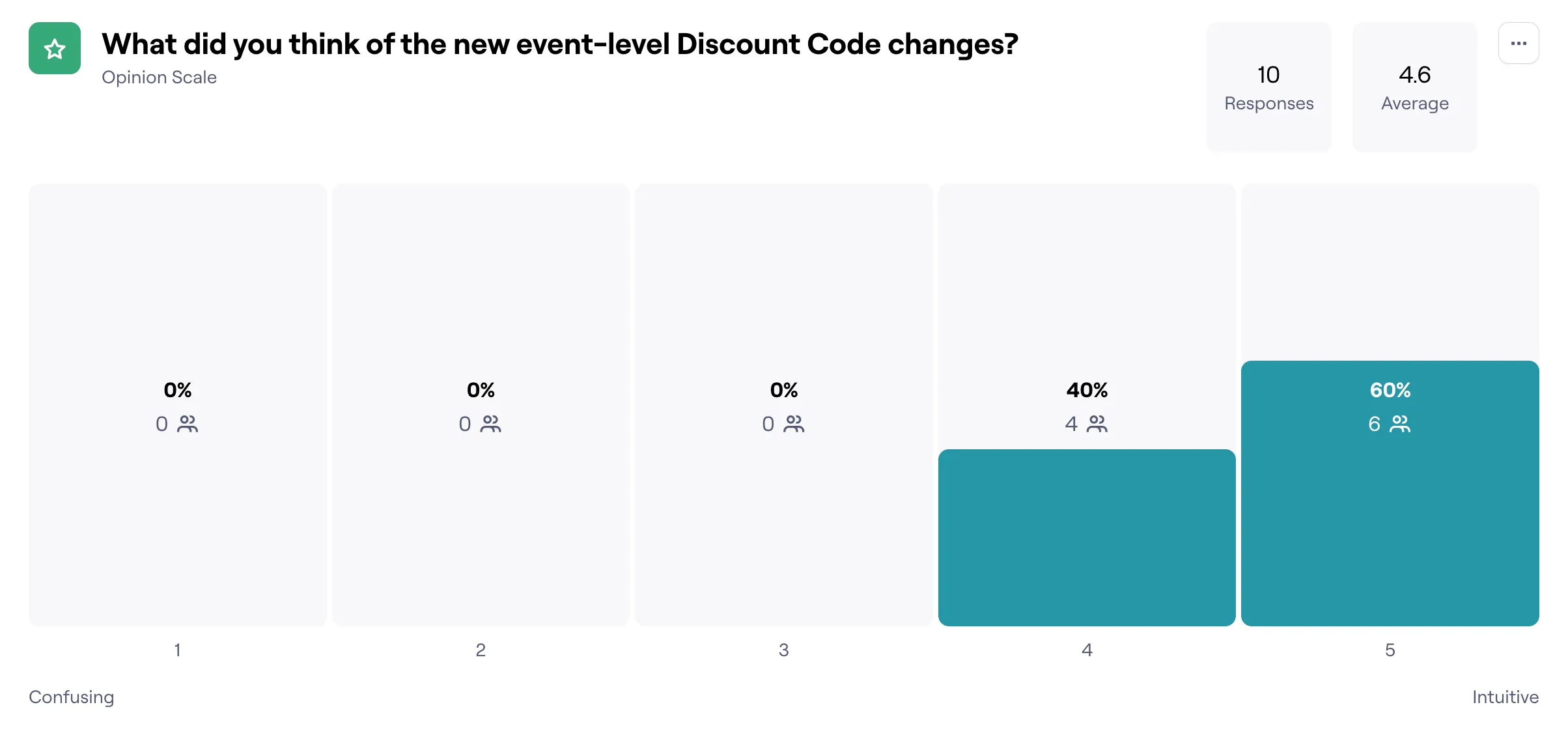Discount Codes
Solve for clients trying to create multiple, overlapping and financially complex promotions in a clear, efficient way.
Year
2025
Team
Product manager
Development team
Development team
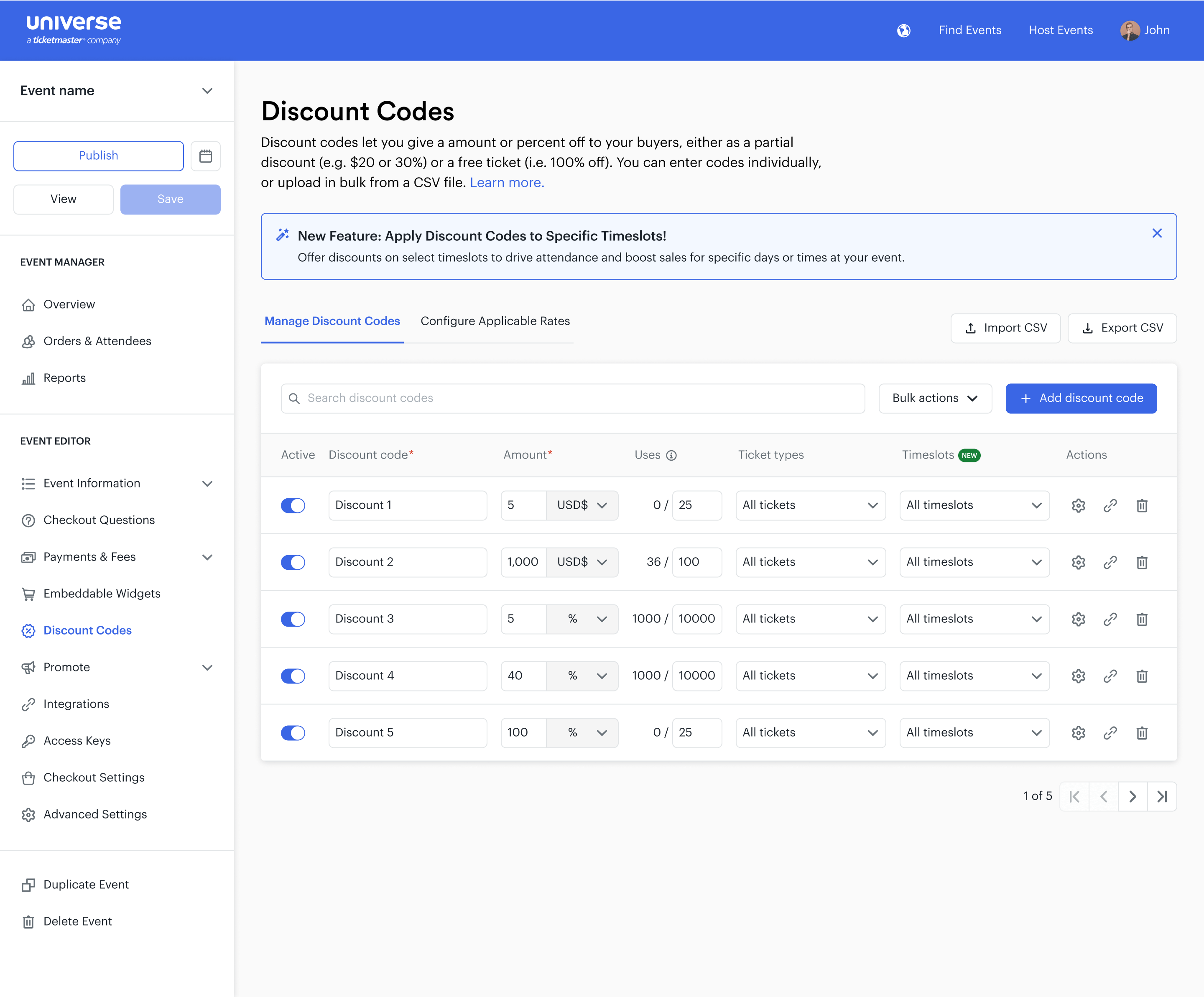
+60% Performance
Creating hundreds of discount codes was now possible.
100% Adoption
None of our clients had to find workarounds for mass-discount code creation.
Ongoing support
We continued to improve the feature post-launch.
Design process
UX research
Primary research
Collected insights from internal teams and clients to figure out their pain points and solve the problem.
Secondary research
Assessed competitors and researched industry best practices to identify the smartest ways to design and build.
Feasibility check
Work with developers to ensure that the proposed solutions are viable.
UI design
Design system
Leveraged our robust design system to effectively build in high fidelity from the start.
Feedback
Went through multiple rounds of feedback and user testing to improve the feature before it went live.
Final
Once designs were aligned with all internal departments, it was time to hand-off to development.
Business Case
We identified the problem, our ideal personas, and determined quantifiable success metrics to prove we solved the problem for them.
Problem
Without the ability to apply discount codes to specific dates and time ranges, customers may miss out on promotional offers during key events or time-sensitive campaigns. This could lead to dissatisfaction among customers who expect flexibility and targeted promotions. From a business perspective, not being able to accommodate such requests may result in missed revenue opportunities and a competitive disadvantage.
Persona
We focused on Enterprise and Large Market Operators. They were the largest clients using Universe, and were categorized by their large sales cycles and by being recognizable, global brands. We specialized our personas further defining them as clients seeking to run promotional campaigns during specific time periods. We also wanted to improve the ticket buyer experience by offering more flexible discounted pricing.
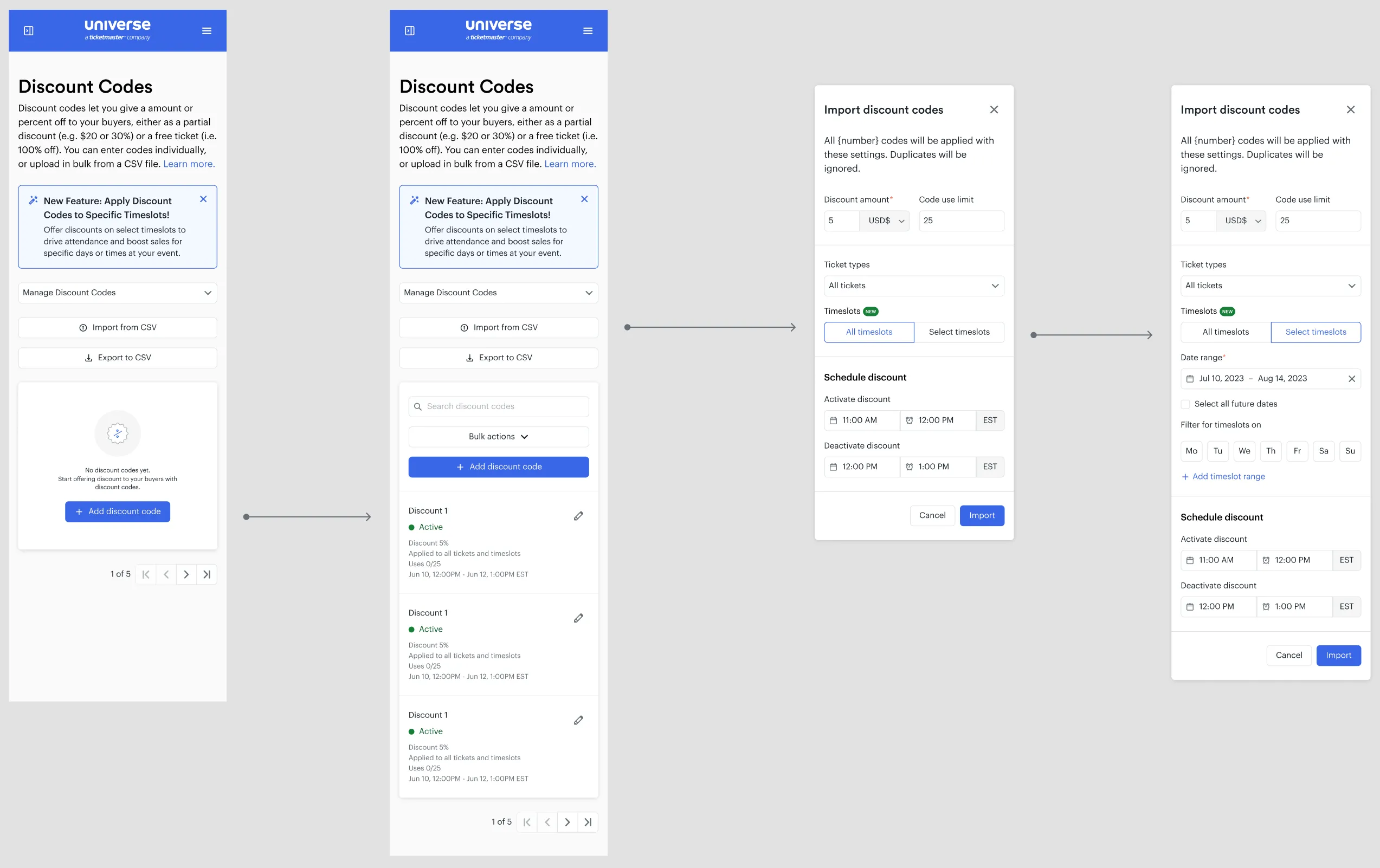
Success Metrics
We’ll know we solved the problem based on a number of quantifiable targets. Defining these metrics was essential in dictating our research approach. We set off to gather the evidence we needed from our primary and secondary research.
What key success metrics are we aiming to achieve?
>1 ticket purchased using a time-bound discount code. At the same time, see a decrease in customer inquiries or complaints related to discount code application. Finally, increase in conversion rates during targeted promotional periods.
How are we going to measure this?
Monitor conversion rates for time-bound and non-time-bound discount codes, as well as revenue impact using our in-house data tracking software.
Research & Discovery
We interviewed our internal teams and clients that fit our personas. We gathered all of this info and scoped our project accordingly.
Interview Insights
These are the insights that we gathered from our participants. Both our internal teams and clients were aligned in their asks for this project.
Specific asks
Both sets of participants wanted the ability to control when discount codes were active by setting specific timeslots, date ranges. Discounts should automatically enable or disable based on these settings. If a customer tries to apply a discount to an ineligible timeslot at checkout, an alert will notify them. Internal teams asked for the removal of features that muddled the current implementation.
They wanted to enhance discount management with tools to set usage limits, activate/deactivate discounts en-masse, improve checkout clarity by alerting users if they’re applying a discount to the wrong date, as well as label dates in the calendar where a discount is applicable, allowing communicating offers to ticket buyers in a more intuitive way. Clients also wanted discount codes to be tracked in our reporting dashboards.
Design System
I used our design system to start with high fidelity designs, then created prototypes and user testing to get feedback from internal teams and clients. Universe has a comprehensive design system which allowed me to begin iterations in high definition. This is a design system all designers at Universe contribute to, making it very familiar and intuitive to use for us. I was able to quickly iterate as a result.
Applying interview feedback
We took what we learned from our interviews and applied them to our designs. Below is a highlight of the most sought after asks, made real through our designs.

Below is an example of how we made discount codes more visible for ticket buyers when looking to buy tickets on multiple dates. This addressed the feedback of, "Improve checkout clarity by alerting users if they’re applying a discount to the wrong date"
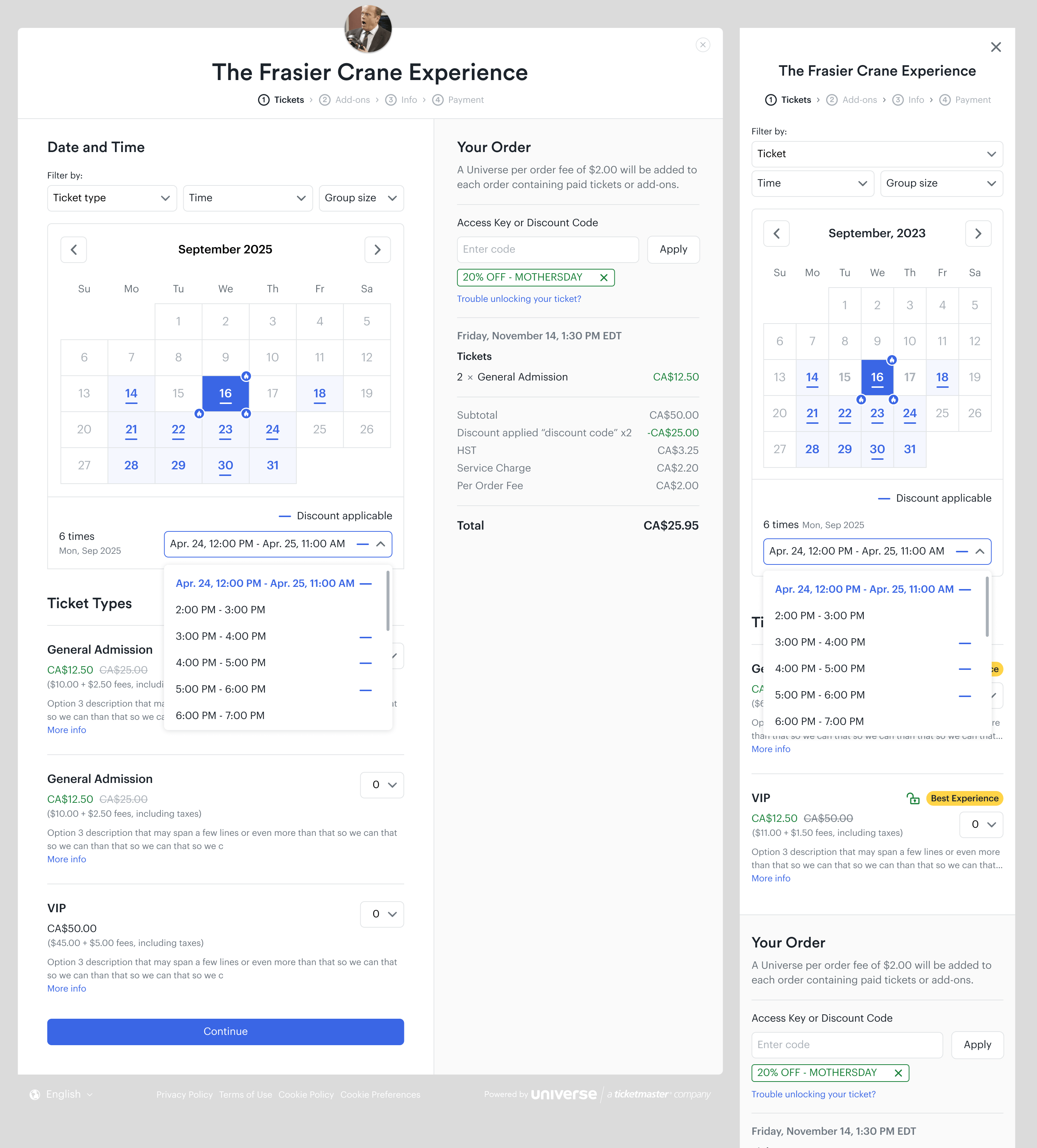
Lastly, this is how we were able to integrate our discount codes in our reporting dashboards for easier tracking. Implementation can be found near the bottom of the page.
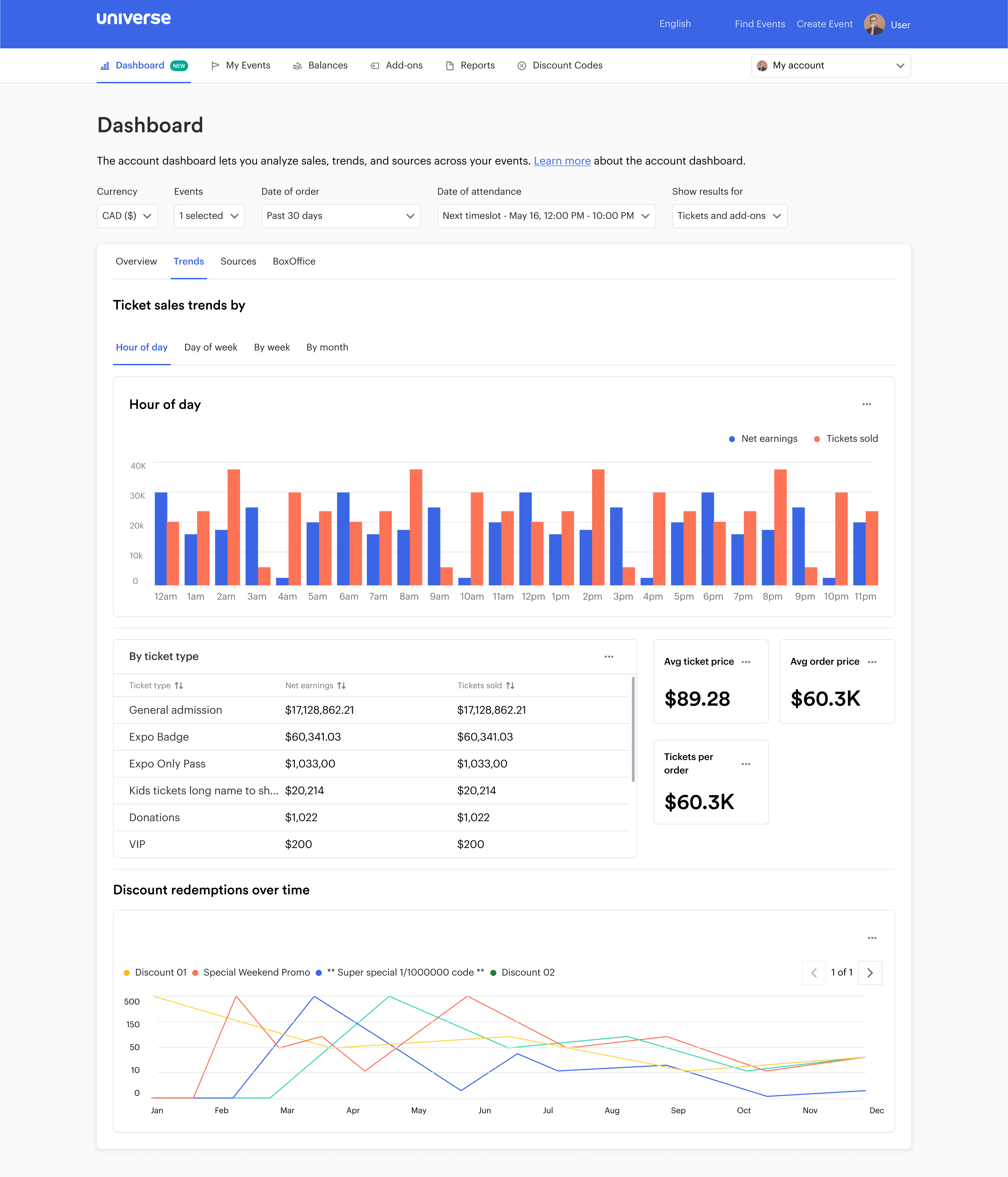
Final Designs
Gathered more feedback from the clients we built for, then scoped in some last minute needs from both our clients, our sales teams, and engineering teams to arrive at final designs.
Did we solve the problem
We asked our teams and clients if we addressed their most sought after asks. For the most part, we did. There were more asks that they wish could have made it to the final version, but they were considered nice to haves.
Was our feature successful based on metrics?
We are continuing to monitor discount codes to determine if they are trending in the right direction. So far, they seem to be. This section will be updated with findings from a year's worth of monitoring.
Product flow
Explore final designs and assess how I organize design files in this interactive product flow, straight from Figma.

